No’s and All’s: The very few Rules of Helicopter Stories
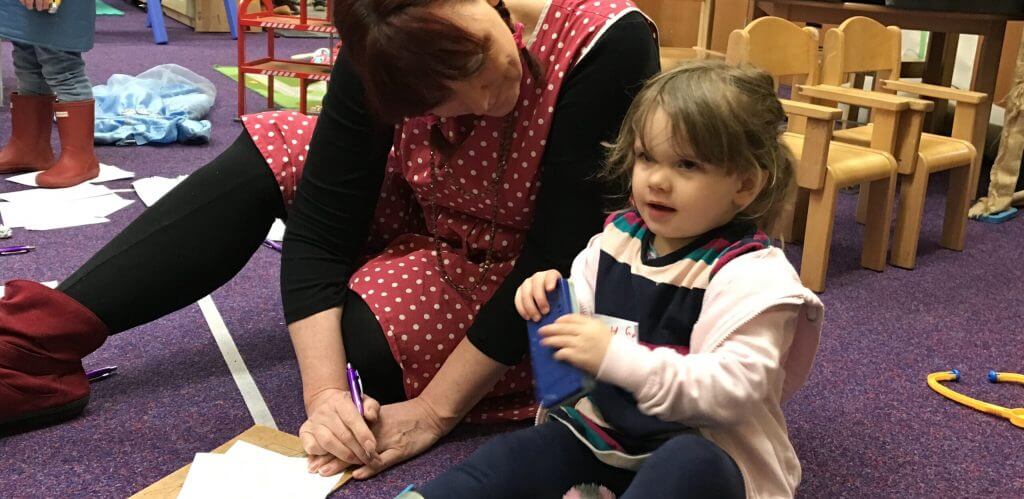
There are very few rules for Helicopter Stories. It can be adapted to fit within any early years setting and is suitable for children aged 2 to 7. You can work with the whole group, or small groups, inside or outside, weekly, twice weekly, daily, it is entirely up to you. However, there are a few aspects of the approach that I see as rules, and I thought I would share these in my last blog of the academic year 2018-19. I am calling these rules – The No’s and All’s of Helicopter Stories:
NO child should be forced, coerced, bribed or persuaded in any way to TELL a story.
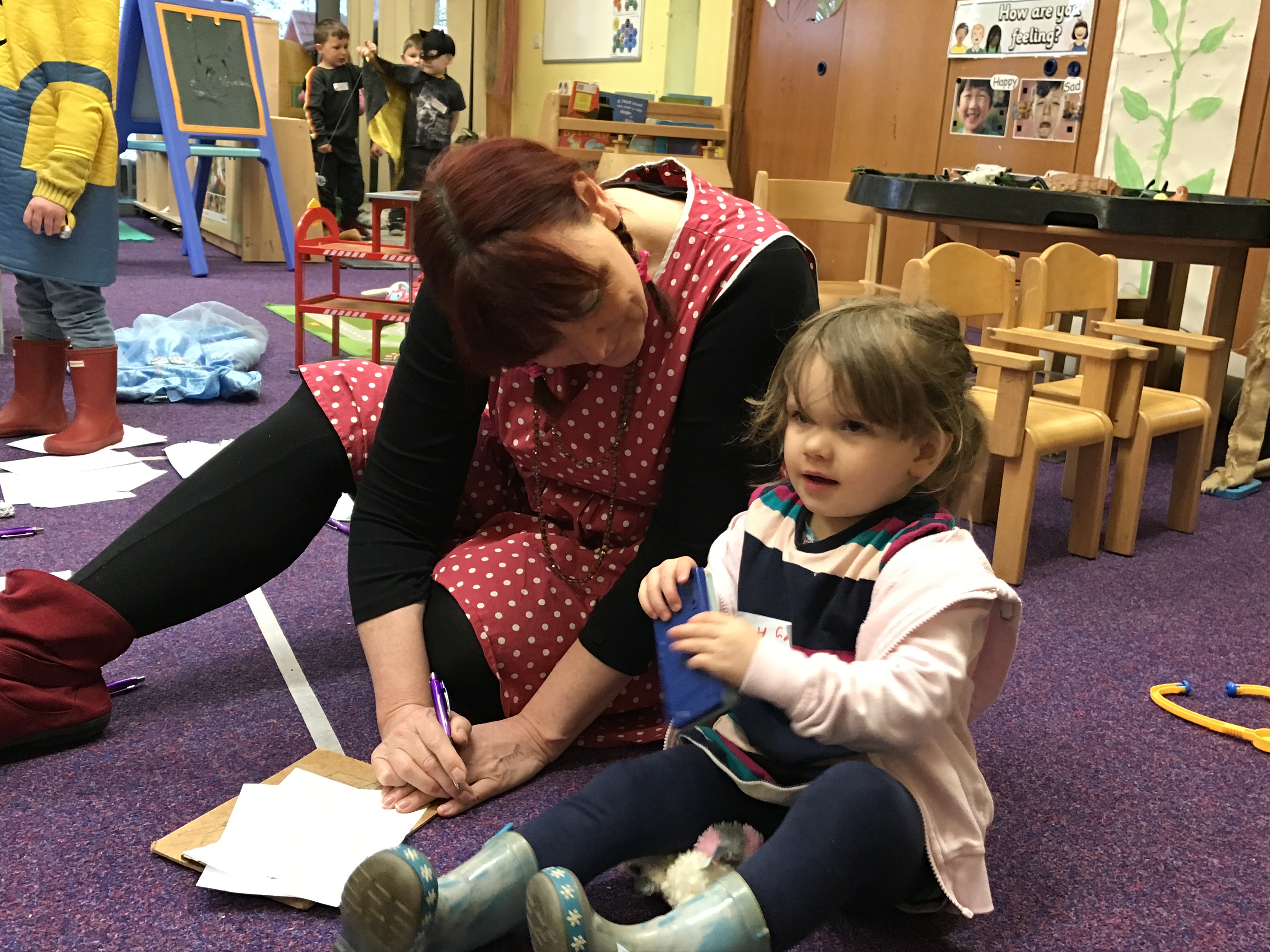
In 1999, when I first saw Vivian Gussin Paley working with a group of children, I was immediately struck by how non-judgemental she was. A boy stood watching her as she scribed the story of one of his friends. Vivian asked if he would like to tell her a story and he shook his head. ‘That’s okay,’ she said. ‘You can be a story-listener.’ The boy visibly grew, and the next day, he was ready to tell his own story.
When a child says no to telling a story, I never try to persuade them. The relief on their faces when they realise it is okay to say NO is very apparent. However, I also never stop asking. Never stop offering the opportunity. When children are ready, they will say yes.
ALL stories must be acted out on the day they are taken.

Helicopter Stories works on so many levels because ALL of the stories children tell are acted out on the day they are taken. To manage this, I tend to limit the number of stories I take during a session to the amount of time I have for acting out. Six full A5 stories takes about ten to fifteen minutes. Shorter stories are quicker. I rarely scribe more than eight to ten.
Some settings act the stories out several times during the day with whichever children choose to gather; others, like myself, have a set time for acting out, at the end of the session. However this works is fine, but do limit the number of stories you take to those you have time to act. Having eight stories left for the next day is not satisfactory for the children and means the stories are unlikely to get acted. Eventually the children will see through this and lose interest in the approach.
If I am only able to take six stories in a session, I explain to the children that others haven’t had a turn yet. I keep a register as a record of who has told and who hasn’t. This means over four or five sessions, I get to scribe the stories of all the children in a class, not just the ones who immediately want to get involved.
NO child should be forced, coerced, bribed or persuaded in any way to ACT in a story.
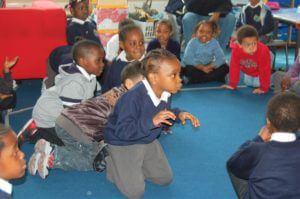
Again, if children don’t want to act in a story that is fine, I move straight on to the next person around the stage to see if they want to get up and take the role.
If the storyteller doesn’t want to act in their own story, that is fine. I often say to children who don’t want to act in their stories that I quite like watching my stories being acted out too.
ALL children have the right to choose which character they’d like to play in their own story.
Once I have scribed a story from a child, I read it back to them, underlining all the characters and possible objects that can be brought to life. I only underline these once, the first time they appear.
Then I have a list. I read the list to the child. Which character would you like to be in your story? Would you like to be the Princess, the dog or the castle? One they tell me I circle the character, so I remember their choice when we come to acting the story at the end of the session.
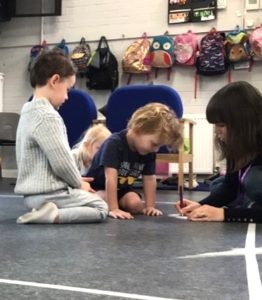
NO child can choose which of their friends have the other parts.
When Vivian Gussin Paley wrote You Can’t Say You Can’t Play, she radically changed the way her classroom had been doing Storytelling and Story Acting. From that moment onwards, Vivian went around the stage, in turn, selecting children to act in each of the stories. In this way, gender roles are blurred. Boys became princesses; girls become baddies. The storyteller chooses which part they play but they Do Not get to cast the other parts.
Selecting children in this way is fairer, everyone has a chance to be in the stories, rather than just the popular children, or those chosen by their friends. Someone once asked me if this was why it is called Helicopter Stories, as children are chosen from their place around the stage like the blades of a helicopter turning. It isn’t the reason, but it’s a lot better reason than the true story, so let us keep it like that for the moment.
ALL stories must fit onto an A5 page.
A5 pages are the perfect length. As children get more confident in the approach, their stories will quickly reach the bottom of the page. If you use A4 paper, each story could end up being far too long. I always say – ‘Your story can be as short as you like, but no longer than the bottom of the page.’ At MakeBelieve Arts, we now use A4 paper cut in half and store these in books for each child using a cardboard cover and a treasury tag.
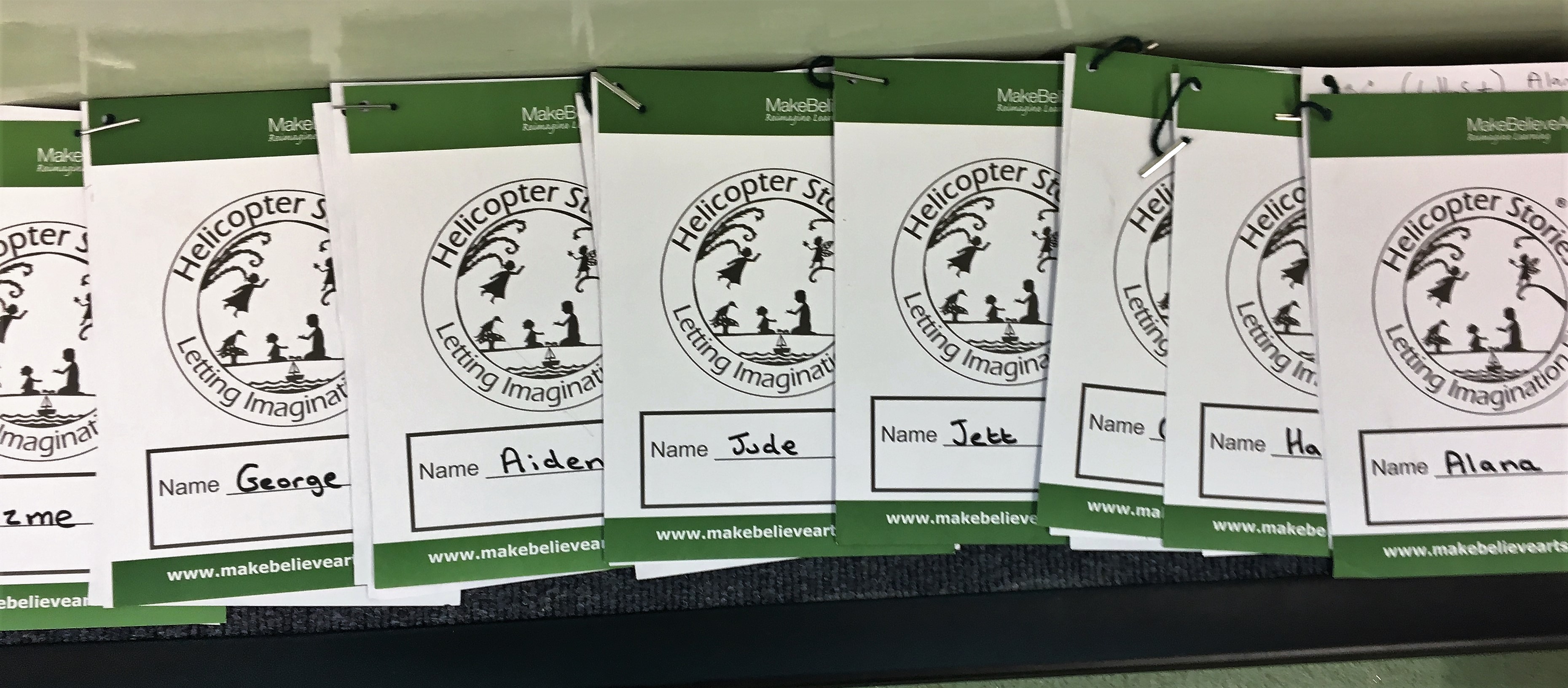
NO child should be forced, coerced, bribed or persuaded in any way to WRITE a story.
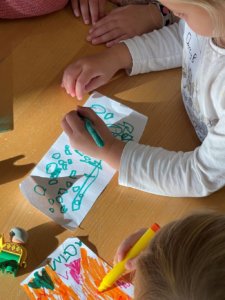
Helicopter Stories is not a writing approach, although writing is a happy bi-product. When children see that writing has a purpose, they often end up using their emergent writing skills to get their story down, especially when it is not their turn to be scribed. If I am handed a page of emergent writing, I ask the child which character they want to be in their story. When we act out the scribed stories from that day, the children who have written also get the chance to move around the stage as their character.
When children start to write sentences, I include these in the acting out, sometimes getting the children to read their writing to me before we sit around the stage so I can best do it justice. My current Year 1 class are now regularly writing a whole side of A5 paper when it is not their turn to be scribed. These stories are all acted out alongside the scribed stories.
However, and this is so, so important. Never Stop Scribing – even when children have begun to write their own stories. Children’s oral language will be so much more advanced than their writing, and they need to keep doing both. I am about to start working with Year 2 children, and they too will be scribed alongside having the chance to write.
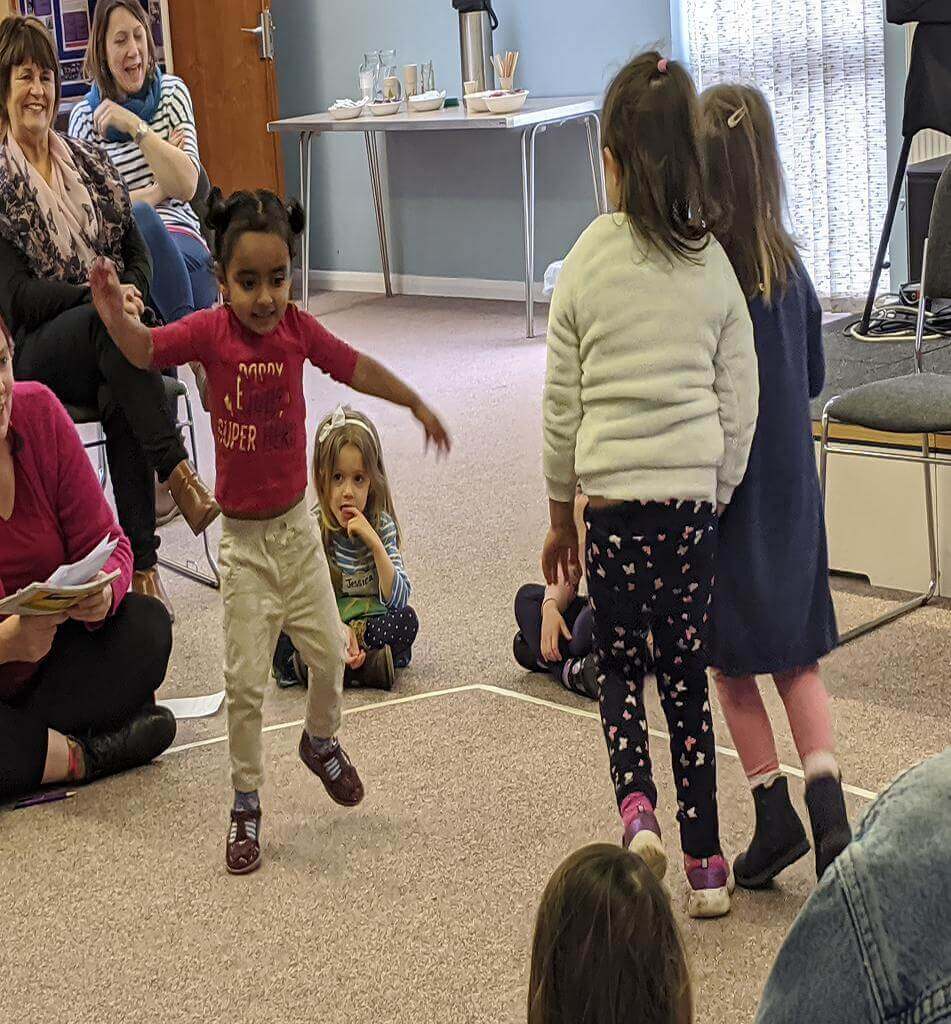
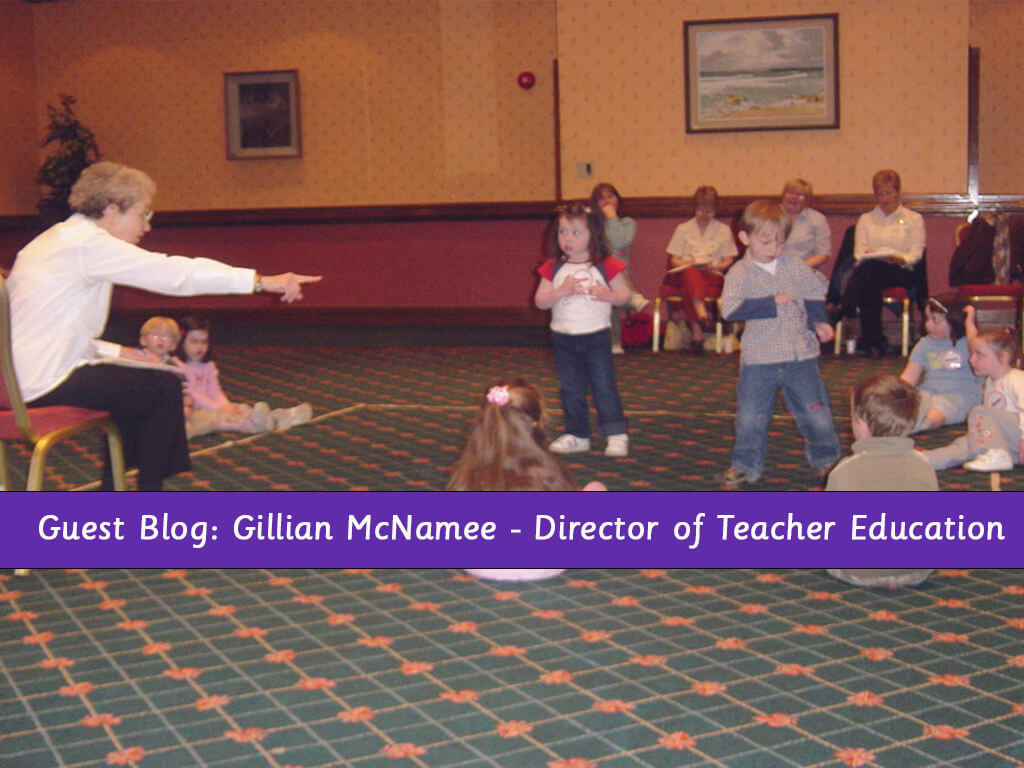
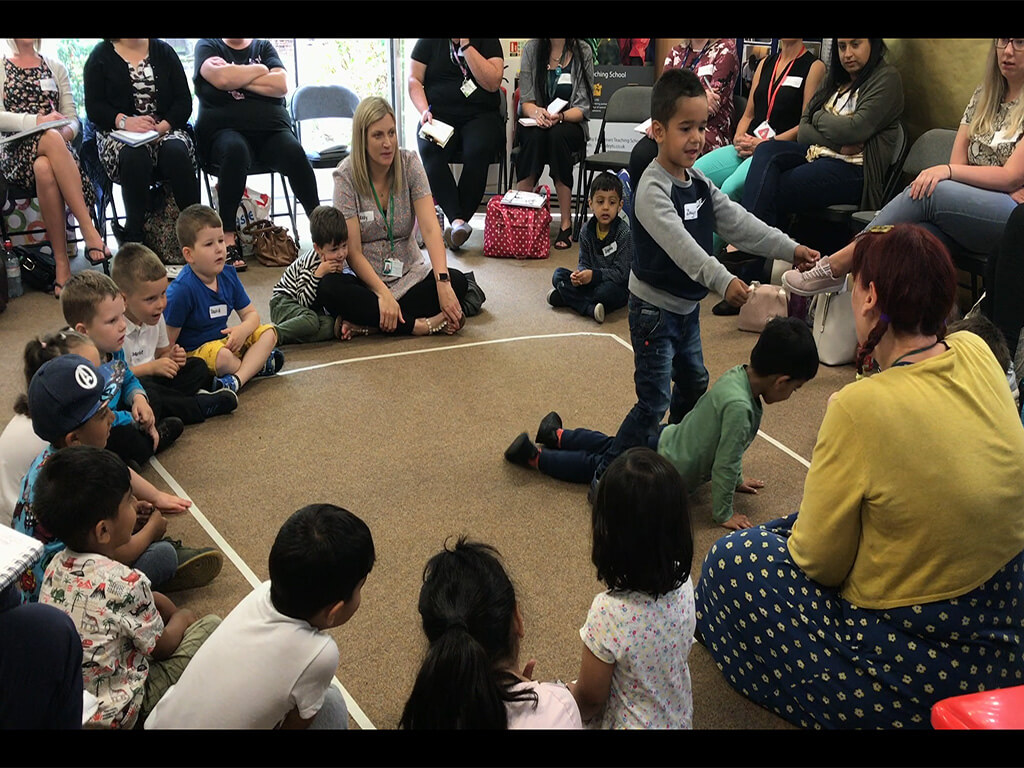
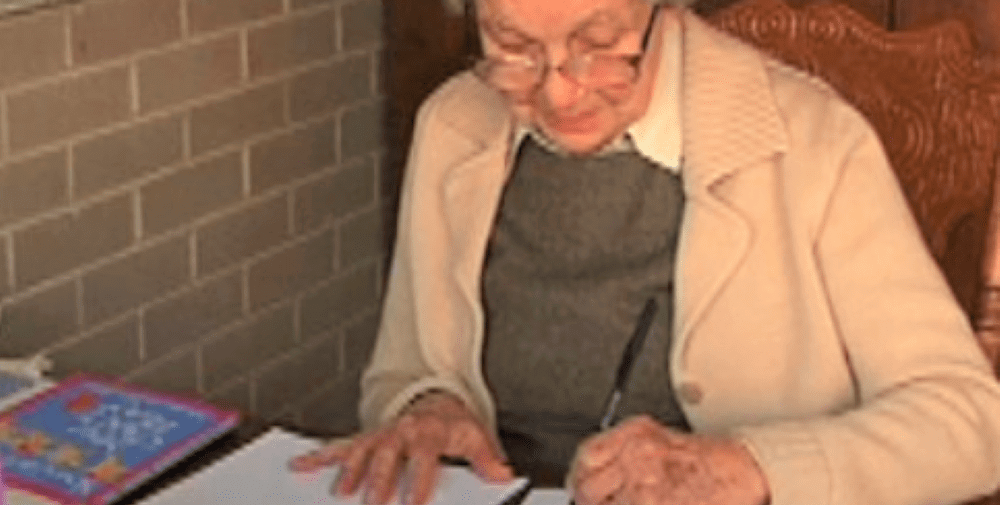
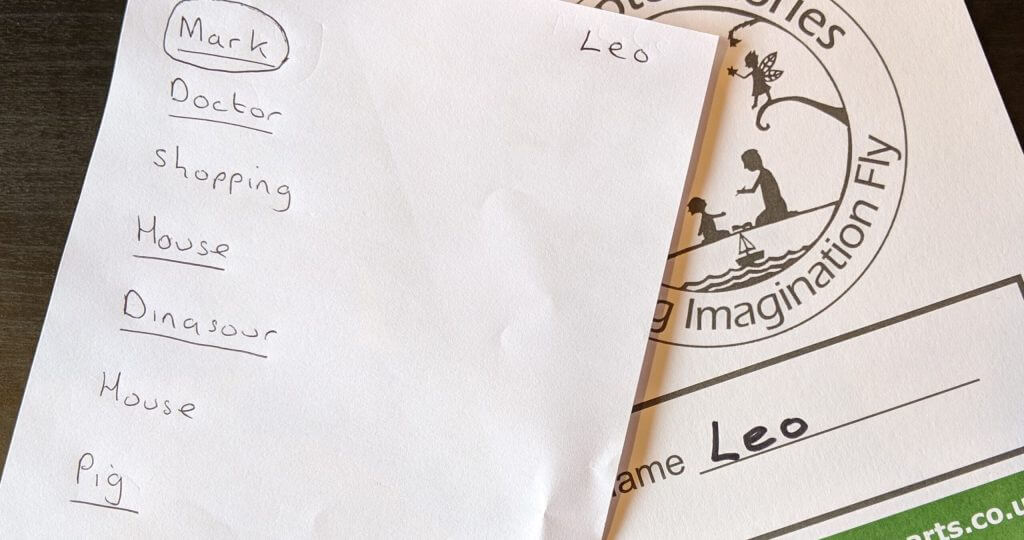
Fabulous Trisha loved the no’s and all’s article ! Still doing it in Year 1 in Norwich- still my favourite part of the week !
Thank you Cecilia – I’m so glad it’s working for you and that you are enjoying it as much as I do X
I feel so lucky to have been given the opportunity to attend your workshop at our academy. The impact of helicopter stories has been wonderful. The children absolutely love it! It helped one child in my class beyond anything I could have imagined. She went from a shy little girl who hardly spoke to a confident storyteller and actress. Thank you so much for everything you’ve taught me through your workshop and your books.
Oh thank you. What a lovely message. I am constantly surprised and in awe about the effects of Helicopter Stories on so many children. Vivian Gussin Paley really found a way to tap into something special with her storytelling and story acting curriculum X